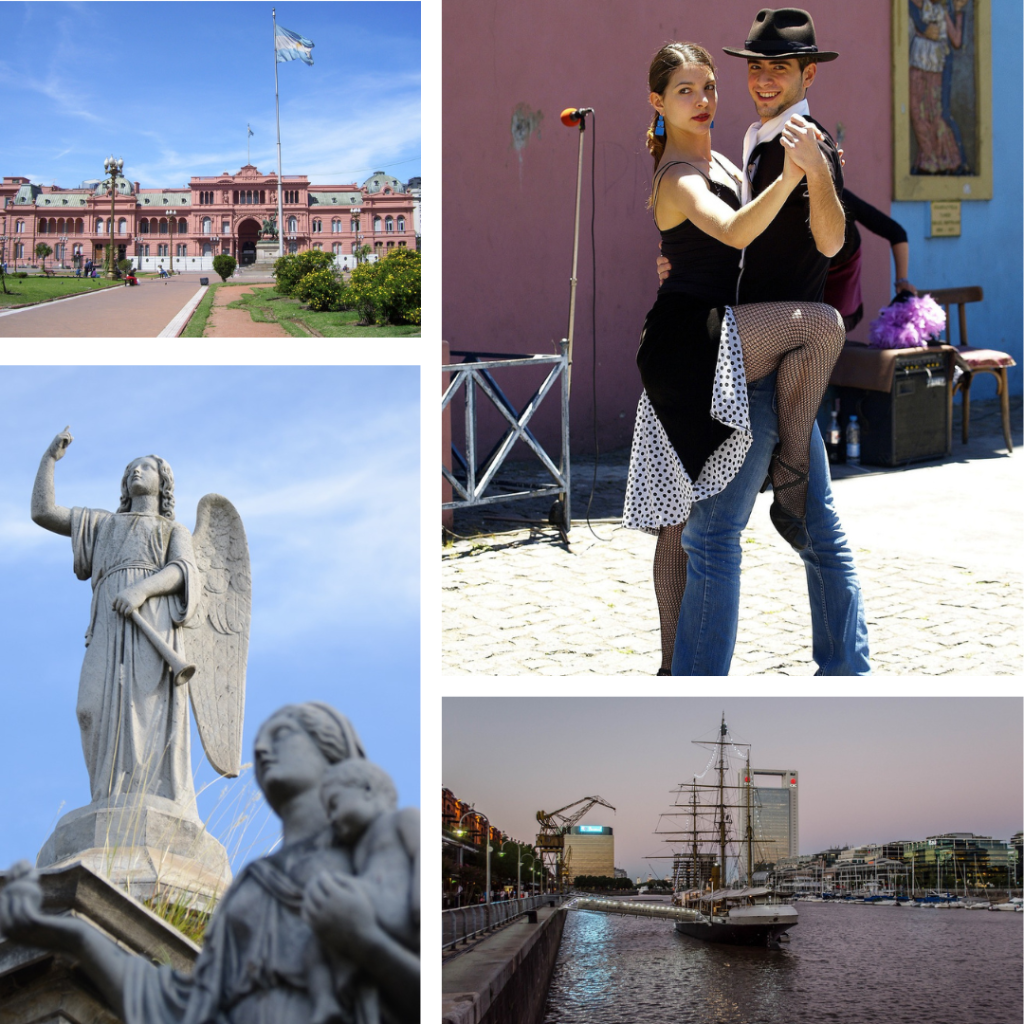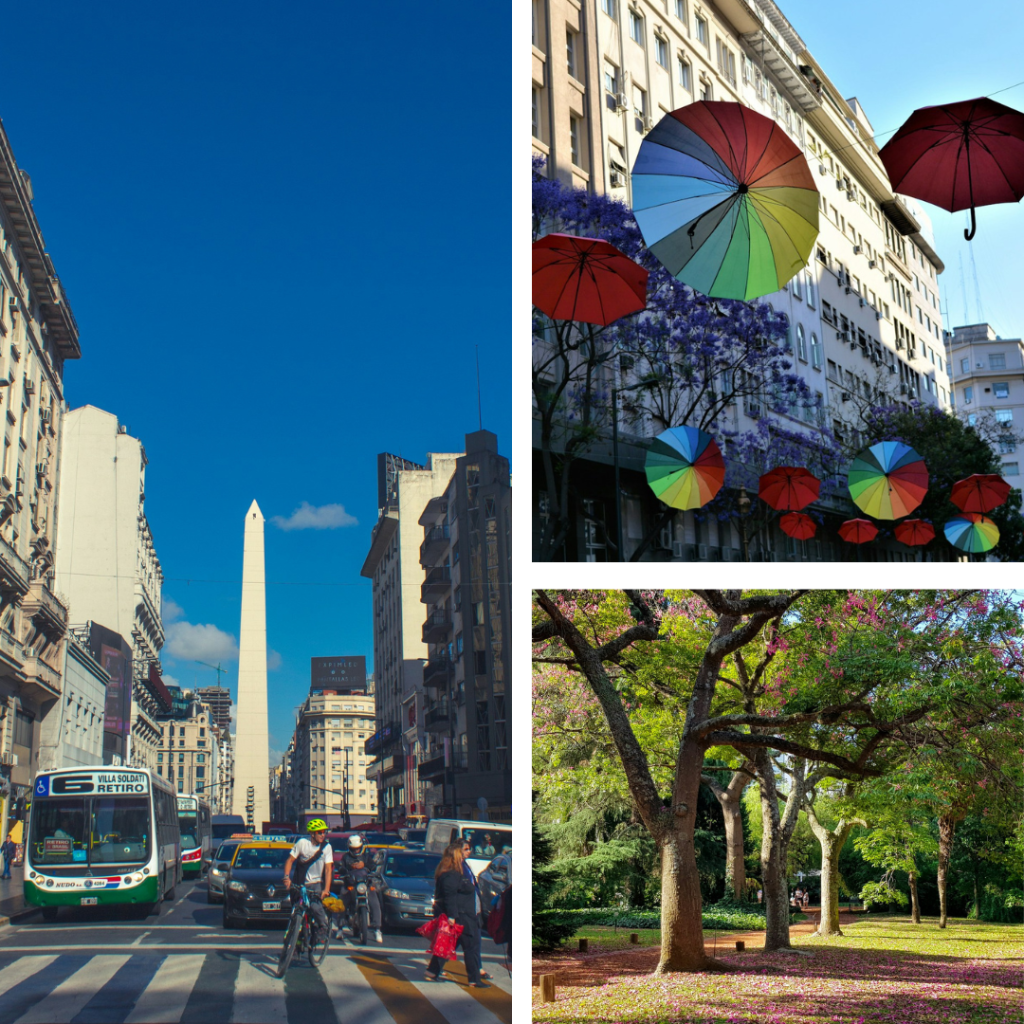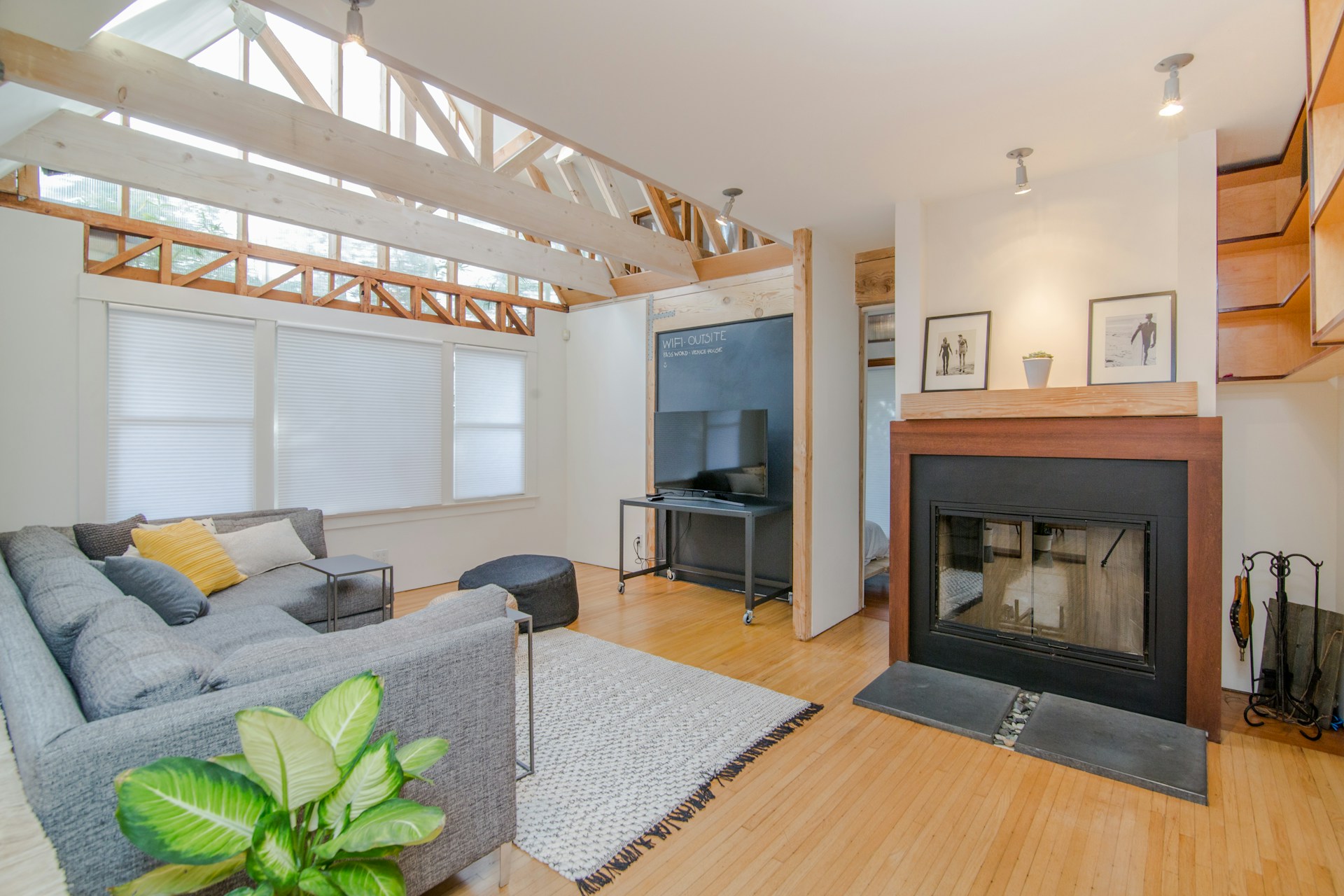Digital Nomads in Buenos Aires: Work and Lifestyle Guide
Plan to live and work as a digital nomad in Buenos Aires? We bring you the ultimate guide to it! The capital of Argentina awaits you.
Buenos Aires is a city that has everything it takes to attract digital nomads: Co-working spaces, an affordable cost of living for those with income in foreign currencies (especially dollars or euros), a vibrant and cosmopolitan culture, an international gastronomic offer and plenty of nightlife. In short, it’s the perfect city to live and work in, especially for those who want to meet people, enjoy Argentina’s passion for football and have a lively cultural agenda. If you identify with what we say and plan to live and work as a digital nomad in Buenos Aires, reading our guide will help you plan your stay in one of the most interesting cities in Latin America.
Why choose Buenos Aires to live as a digital nomad?
There are many reasons why we recommend the capital of the Argentine Republic for digital nomads. In fact, it has become an increasingly popular destination for people wishing to work for the outside world from the comfort of their home or co-working space. We already told you a little bit in the introduction, but now we go further and tell you why being a digital nomad in Buenos Aires is an excellent idea:
1. Affordable cost of living:
Compared to other Latin American and world capitals, Buenos Aires offers a relatively low cost of living for those entering with hard currency (but not for those earning in local currency, due to high inflation rates). Rents, transport and food can be affordable, allowing digital nomads to enjoy a good quality of life without spending too much.
2. Cultural, nightlife and leisure activities
Buenos Aires is known as the “city that never sleeps” and this is because its cultural and leisure offer, as well as its nightlife, are very attractive. You will always have something to do in Buenos Aires or somewhere new to discover.
Colourful neighbourhoods such as La Boca or San Telmo, a huge variety of museums, theatres, cinemas, shopping centres, world-renowned football stadiums and an enormous gastronomic offer make it a vibrant city, especially for young people.
3. Connectivity and co-working spaces
Buenos Aires has a good internet infrastructure and a wide range of co-working spaces that suit the needs of digital nomads. Spaces like WeWork and many others offer comfortable facilities, fast internet and an ideal community for networking.
Buenos Aires has extensive Internet coverage in most of its urban areas, with providers offering fibre optic connections of up to 300 Mbps or more in the most central neighbourhoods. In addition, infrastructure improvements have been made in recent years to ensure higher speeds and more stable connections, especially in residential and commercial areas. Anyway, if you’re going to be a digital nomad in Buenos Aires , don’t miss the chance to connect without limits with Holafly’s eSIM for Argentina. Forget about roaming and enjoy unlimited and fast internet.
The City of Buenos Aires offers a free Wi-Fi network called BA Wi-Fi, available in more than 2,400 access points located in parks, squares, public spaces, Metrobus and underground stations. It’s important to note that while these public spaces offer free connection, stability and speed may vary. For tasks that require a more robust connection, co-working spaces are the best option.
4. Cultural and linguistic experience
For those who wish to immerse themselves in a Spanish-speaking culture, Buenos Aires is the ideal city. It offers a wide variety of activities and courses, from tango lessons to Spanish classes, allowing you to experience a complete cultural immersion.
5. Short-stay visa waiver
Many countries don’t require a visa for stays of up to 90 days, which is ideal for those looking to stay for a limited time without legal complications. In addition, there’s the option of extending the period of stay or making a temporary departure to return later. There’s even a visa specifically designed for digital nomads. For more information, you can consult our guide on the digital nomad visa in Argentina.
6. International community and events
Buenos Aires is a meeting point for digital nomads, especially in certain neighbourhoods. The international community of freelancers, entrepreneurs and artists is large and diverse, making it easy to make friends and professional connections.

Visas for digital nomads in Buenos Aires
Do you want to live and work in the city of tango and mate? We have good news, getting a digital nomad visa in Buenos Aires is easier than you think. The digital nomad visa for Argentina allows you to live in Argentina while continuing to work remotely for companies or clients abroad.
The Digital Nomad Pass in Argentina is a visa designed specifically for remote workers, launched in 2022 as part of an initiative to consolidate the country as a key destination in Latin America for remote work. This transitory visa allows for an initial stay of up to 180 days, with the option to extend for an additional 180 days. It’s aimed at foreign people who work online, as employees or freelancers, for companies or clients outside Argentina.
The creation of the Digital Nomad Pass responds to the growing global interest in destinations that offer a good quality of life, digital connectivity and affordable living costs, qualities with which Argentina can compete in the digital nomad market. Moreover, this programme not only benefits remote workers, but is also part of an economic revival plan that aims to boost tourism and promote a sustainable economy. On average, digital nomads spend more during their stay than conventional tourists, with an estimated spend of up to $6,000, representing a significant boost to local economies.
Argentina presents itself as an attractive destination for these professionals, combining its vibrant culture, gastronomic offer, diverse landscapes and competitive cost structure compared to other countries in the region. The Digital Nomad Pass facilitates their stay in the country and allows them to make the most of what Argentina has to offer as a place of work and temporary residence.
Where are the best neighbourhoods to live as a digital nomad in Buenos Aires?
Buenos Aires is a city that combines a cosmopolitan lifestyle with Latin American warmth, making it an ideal destination for those working remotely and looking for a culturally rich experience. This is especially evident in many of its neighbourhoods, each with its own charm, amenities, and connectivity. Therefore, as a digital nomad you will have more than one attractive proposition to live in the vibrant city of Buenos Aires.
Here are the best neighbourhoods in the city:
1. Palermo
Palermo is one of the largest, most vibrant and attractive neighbourhoods in Buenos Aires, famous for its great cultural, gastronomic and leisure offer. This makes it an ideal choice for digital nomads looking to have everything at their fingertips. Divided into sub-neighbourhoods such as Palermo Soho and Palermo Hollywood, it has countless cafés, co-working spaces, bars and restaurants. In addition, there are plenty of green areas (such as the forests of Palermo), perfect for disconnecting from work and enjoying the outdoors.
- Connectivity: Palermo has excellent public transport options, including several metro lines and numerous buses. Internet connection is generally good.
- Atmosphere: Popular with expatriates and young locals, the area offers a lively social life and a wealth of cultural and entertainment options.
- Points of interest: One of the neighbourhood’s main attractions is its many green areas, including the Parque Tres de Febrero, the Bosques de Palermo, the Botanical Gardens and the colourful Japanese Garden. The Galileo Galilei Planetarium is also worth a visit.
2. Recoleta
Recoleta is an elegant neighbourhood, famous for its European architecture and sophisticated atmosphere. With green areas such as the Plaza Francia and numerous museums and galleries. It offers a wide range of gastronomic and entertainment options, with numerous classic cafés, fine dining restaurants and sophisticated bars. It’s also an excellent neighbourhood for shopping, with shops selling national and international brands. In short, Recoleta is ideal for those looking for a quiet and culturally enriching place.
- Connectivity: There are good transport links and many places with high-speed internet.
- Atmosphere: It’s a less bustling neighbourhood than Palermo, safe and distinguished, ideal for those looking for a more relaxed lifestyle.
- Points of interest: Among its many attractions is the iconic Recoleta Cemetery, a true open-air museum with marble mausoleums and sculptures of great historical and artistic value, where important figures of Argentine history rest. Other points of interest include the National Museum of Fine Arts, the Mariano Moreno National Library, Plaza Francia and Thays Park.
3. San Telmo
San Telmo is the oldest neighbourhood in Buenos Aires. With a bohemian and authentic air, its cobbled streets full of antique lanterns breathe tango and art in each of its corners. It’s a perfect place to explore the roots of Buenos Aires, as its atmosphere transports you to another era.
San Telmo is also famous for its vibrant nightlife, with bars, cafés and restaurants that maintain the spirit of Buenos Aires. The streets are also lined with murals and street art that reflect the identity of the neighbourhood. It’s popular with artists and nomads looking for a more authentic and traditional experience.
- Connectivity: Although some areas are less modern, the infrastructure for remote working is growing and there are co-working spaces and cafés with good internet.
- Environment: San Telmo has an artistic atmosphere, with an interesting mix of locals, expats and tourists. On Sundays, the San Telmo market is an additional attraction.
- Points of interest: He historic San Telmo Market is undoubtedly the main protagonist of the neighbourhood. Founded in 1897, you’ll find everything from antique stalls to food stalls, fresh fruit and gourmet products. Other icons of the neighbourhood are Plaza Dorrego, the Museum of Modern Art of Buenos Aires (MAMBA) and the National Historical Museum.

4. Villa Crespo
Villa Crespo is a porteño neighbourhood that, although less touristy than its neighbours, has earned a special place among those looking for an authentic and modern atmosphere in Buenos Aires. Located next to Palermo, it stands out for its mix of tradition and innovation, with a local atmosphere, independent designer shops, cafés and bars that attract a bohemian and young crowd.
In addition, Villa Crespo has grown as a gastronomic centre with innovative and high quality proposals. Here you’ll find both international restaurants and local eateries, along with bakeries and cafés that maintain the charm of the neighbourhood.
- Connectivity: There are good internet and transport options, as well as a growing number of co-working spaces and cafés.
- Environment: Villa Crespo is quiet and full of lesser-known shops and cafés, allowing digital nomads to have a more authentic and accessible experience.
- Points of interest: For those who want to buy clothes and other accessories at affordable prices, the outlets on Avenida Cordoba are a great alternative. Other outstanding spaces in the neighbourhood are the Teatro del Perro and the Galpón de Guevara.
5. Belgrano
Belgrano is a spacious and green neighbourhood, ideal for those who prefer residential areas with all services close at hand. It’s another of the most elegant areas of Buenos Aires, with an attractive mix of residential areas, classic and modern architecture and a vibrant commercial and cultural life. Located in the north of the city, it’s perfect for those looking for a relaxed atmosphere full of porteño charm, with wide avenues, parks and numerous attractions.
- Connectivity: Metro line D connects Belgrano with the centre and other important neighbourhoods. There are also good co-working spaces.
- Atmosphere: The atmosphere is residential and family-oriented, with a large expatriate and international student community, due to the proximity to some universities.
- Points of interest: The area known as Barrancas de Belgrano is one of the main attractions of the neighbourhood. It’s a set of squares and parks designed by the landscape architect Carlos Thays, ideal for outdoor walks, picnics and sports activities. The Avenida Cabildo and the Barrio Chino are also outstanding.
Important: If you are a frequent traveler and want to stay connected without worrying about expensive roaming or looking for a new SIM at every destination, Holafly’s subscription plans are for you. With a single eSIM, enjoy internet in more than 170 countries for a fixed price and no surprises on your bill. Travel without limits and connect easily and securely! 🚀🌍

Taxes for digital nomads in Buenos Aires
Taxes for digital nomads in Buenos Aires depend on several factors, such as your nationality, the length of your stay in the country and the tax agreements between Argentina and your home country. In general, digital nomads are not subject to local taxes if their residence in Argentina is temporary and does not exceed 183 days in a calendar year, as in this case they are not considered tax residents in Argentina. However, if their stay exceeds this limit, they’d be subject to tax on their overall income.
For digital nomads from countries that have double taxation treaties with Argentina, the situation may be more favourable. These treaties are designed to avoid double taxation, i.e. the payment of taxes in both countries on the same income. Thanks to these agreements, digital nomads can use the benefits of the treaty to ensure that their income generated outside Argentina isn’t taxed in the country if they’ve already paid taxes in their home nation.
If you want to know more about it, you can read our guide to taxes in Argentina, where you’ll find everything you need to know about it.

Health insurance for digital nomads in Buenos Aires
As a digital nomad in Buenos Aires, you’ll have access to both public and private healthcare systems. The public system in Argentina offers free medical care for residents and visitors in hospitals and health centres, especially in emergency situations. Although waiting times can be long and facilities vary in quality, this access is a valuable resource for those seeking basic medical care without additional costs. However, for faster and more specialised care, many digital nomads prefer the private system, which offers a higher quality of service and quicker access to specialist doctors.
Recommended health insurance for digital nomads
To access the private system, it’s recommended to take out health insurance, as the costs of care in private clinics and hospitals can be high. There are international insurances that cover digital nomads and remote workers in Argentina, such as SafetyWing, World Nomads and Cigna Global. All of them provide cover for emergencies, medical consultations and hospitalisations, and are ideal for those who work remotely and travel frequently. In addition, several local insurers, such as OSDE and Swiss Medical, offer plans tailored to expatriates and temporary residents, with comprehensive medical coverage options including consultations, studies and hospitalisation.
In short, while the public system may be an option for specific needs, having private health insurance guarantees a more convenient and faster care experience.
Quality of health care in Buenos Aires
The quality of medical care in Buenos Aires is recognised throughout the region. The city has a wide network of hospitals and clinics, such as the Italian Hospital, the Alemana Clinic and the Güemes Sanatorium, which provide first class care in multiple medical specialties. Most health professionals are trained in Spanish and many are also fluent in English, which facilitates communication for foreigners.
What are the best places to work as a digital nomad in Buenos Aires?
If you’re a digital nomad in Buenos Aires, you’ll want to know which are the best places to do your daily work. Fortunately, the options are truly plentiful, from modern co-working spaces to coffee shops and parks with internet access.
Here are some of the best places to set up shop and work productively:
1. Co-working spaces
The city has a wide variety of well-distributed co-working spaces in the busiest and safest neighbourhoods. Among the most prominent are:
- WeWork: Has several locations in the city, with strategic locations in Palermo, Belgrano and Microcentro. It offers comfortable spaces, fast Internet connection, meeting rooms, lounge areas and cafeterias. Daily plans are around $10, while monthly memberships can vary depending on the type of access.
- La Maquinita: This co-working has a relaxed and friendly atmosphere, ideal for freelancers and entrepreneurs. It offers locations in Palermo, San Telmo and Belgrano, with high-speed Internet access, common areas, and free coffee.
- AreaTres: Located in neighbourhoods such as Palermo and Recoleta, AreaTres has established itself as a reference space for the digital community in Buenos Aires. It offers a professional environment with spaces for meetings, workshops and networking events. Costs vary, but you can find daily and flexible options.
2. Cafés with good Wi-Fi
Buenos Aires is also famous for its café culture, many of which are meeting places for freelancers and remote workers. Some of the most recommended are:
- LAB Coffee Roasters (in Palermo): Famous for its welcoming atmosphere and excellent coffee, LAB has reliable WiFi and comfortable spaces to work in.
- Coffee Town (in San Telmo and Palermo): Offers a quiet atmosphere, ideal for those who prefer to work in a more traditional setting.
- Full City Coffee House (Palermo): With an atmosphere inspired by Colombia’s coffee culture, Full City has stable Wi-Fi and well-equipped tables for remote work.
3. Parks and public spaces with Wi-Fi
For those who prefer to work outdoors, Buenos Aires has some parks with free internet access. Although speed and stability may not be as high as indoors, they’re good options for taking a break and working informally.
- Parque Las Heras (Palermo): This park is ideal for working surrounded by nature, with green areas and comfortable benches.
- Plaza San Martín (Retiro): Located in Microcentro, this plaza offers free Wi-Fi zones and is a good option for working outdoors in a central environment.
Each of these options allows you to work comfortably while connecting with local culture and other digital nomads. Depending on your preferences, you can choose between the comfort of a co-working space, the charm of a café or the freshness of a park in the heart of Buenos Aires.
What’s daily life as a digital nomad in Buenos Aires like?
Buenos Aires is a vibrant city full of options for those who wish to live and work remotely. With its lively cultural life, transport options, co-working spaces and low cost of living compared to other cities, Argentina’s capital has become an attractive destination for digital nomads. Below, we tell you about transport options, managing finances and the general cost of living that will help you settle in comfortably.
1. Transport and mobility
Buenos Aires has a very varied and accessible public transport system for foreigners. It includes trains, buses and subways. The SUBE card allows users to use these means of transport in an integrated and economical way. It also has a night bus system, ideal for off-peak travel, and a large fleet of taxis, as well as ride-sharing options such as Uber, Cabify and Didi, which are convenient and safe for getting around the city.
Digital nomads and other foreigners can drive in Argentina using their international licence for a maximum of 90 days. Therefore, if you plan to stay longer, you can validate your licence in the City of Buenos Aires, which requires certain formalities at the local vehicle registry.
2. Financial management
Have you just received your first salary in Buenos Aires? If you plan to spend an extended period in the country, you have the option of opening a bank account with a local bank (provided you have a residence visa). You can also opt for digital banks operating in Argentina, such as Mercado Pago and Ualá.
For foreigners, the most recommended banks are Nación, Santander, BBVA and Galicia, which offer services in dollars and pesos, as well as on-line banking options to facilitate transactions and withdrawals abroad. Digital banks such as Nubi and Brubank are also an excellent option for managing your finances without maintenance fees and with the possibility of operating from your smartphone. They offer virtual and physical cards, as well as foreign exchange options.
3. Food: Gastronomic scene in Buenos Aires
Eating out in Buenos Aires is, without a doubt, one of the best experiences you can have in the big city. But, for everyday life, it offers a wide gastronomic offer, with large supermarkets such as Carrefour, Coto, Día, Chango Más and Jumbo, where you can find local and imported products.
Now, what about food prices? For starters, you should know that prices in Argentina are constantly changing due to the high inflation rates that the country has been battling for years. Therefore, anything we say in this guide may become outdated in the near future. But in general, eating out in a mid-range restaurant can cost between $8 and $10 per person, while high-end restaurants range from $20 to $40. When it comes to food, the amount of dollars you spend is highly relative, as it depends on many factors. However, it’s estimated that a person spends approximately $200-300 a month on basic food basket items.
A tip to save money on food as a digital nomad in Buenos Aires is to take advantage of the markets and food fairs in the neighbourhoods. Among the most popular are the Mercado de San Telmo and the Feria de Mataderos, where you can buy fresh produce and traditional dishes.

4. Leisure and free time alternatives
Buenos Aires is known for its lively cultural life and wide range of leisure activities. For lovers of sports and outdoor activities, the Bosques de Palermo and the Reserva Ecológica de la Costanera Sur are ideal.
On the other hand, if you prefer more cultural activities, you’ll be surprised at the number of things to do in the city, including museums, theatres and concert halls. On weekends, you can enjoy cultural events in public and private spaces, such as the Teatro Colón, the MALBA and the Usina del Arte. As if that weren’t enough, Buenos Aires hosts several festivals throughout the year, such as the International Independent Film Festival and the Tango Buenos Aires Festival. These events are a great opportunity to interact with the local culture and meet other digital nomads and residents.
5. Best seasons to be in Buenos Aires
Buenos Aires has a temperate climate, but the best times to live and work here depend on your personal preferences. However, two of the best times to enjoy the city are spring (September to November), when the colours of the jacaranda trees flood the streets, and autumn (March to May), when the city is tinged with ochre and reddish tones.
These times will allow you to enjoy the city at its best, taking advantage of its outdoor activities, cultural events and gastronomic offer.
Cost of living as a digital nomad in Buenos Aires
The cost of living in Buenos Aires can vary depending on your lifestyle, but is relatively affordable compared to many cities in Europe or the United States. Below, we present a breakdown of the most common costs of living as a digital nomad in the city.
- Accommodation: Co-living and co-working spaces are becoming increasingly popular, with prices ranging from $300 to $600 per month. Renting a flat in neighbourhoods such as Palermo or Recoleta costs an average of $400 to $800 a month.
- Food: Eating out at mid-range restaurants costs about $8 to $10 per meal. Meanwhile, shopping in supermarkets such as Carrefour, Coto or Día can cost around $100 to $150 a month for basic foodstuffs.
- Transport: Daily use of public transport costs between $10 and $20 per month. Transport apps such as Uber and Cabify are affordable and accessible options.
- Co-working spaces: Co-working space memberships range in price from $190 to $450 per month, depending on the location and facilities on offer. Some offer daily or weekly rates, which is convenient for those who need flexibility.
- Leisure and activities: Leisure activities in Buenos Aires are varied and accessible. Going to the cinema costs about $5, while gym memberships are about $20 to $40 a month.
For withdrawals, ATMs usually charge an international withdrawal fee ranging from $3 to $5 per transaction. It’s best to use debit or credit cards with low commissions when travelling abroad. Also, take advantage of the electronic payment options available in many shops and restaurants.
Digital Nomad in Buenos Aires: Frequently Asked Questions
Buenos Aires is a popular city for expats and digital nomads, with safe and well-connected neighbourhoods such as Palermo, Recoleta and Belgrano. However, being such a large city, it’s very important to take precautions. For example, avoid displaying valuables in crowded areas, especially on public transport. While it has safe areas to live and work in, it’s always wise to be aware of areas or neighbourhoods to avoid.
Buenos Aires has a generally good Internet infrastructure, with adequate speeds for remote work in most central neighbourhoods. In co-working spaces, Wi-Fi is usually fast and stable, ideal for those who need a reliable connection. In addition, there are public spaces, cafés and parks with free Wi-Fi, although its stability may vary.
Argentina has a Digital Nomad Pass, launched in 2022, which allows digital nomads to work from the country for up to 180 days, with an option to extend for another 180 days. This visa is intended for remote workers working for foreign companies. It’s important to check specific requirements and possible visa extensions or changes at the Argentine embassy or consulate.
The cost of living in Buenos Aires can vary depending on lifestyle and area of residence. For a middle-class digital nomad, monthly expenses can be between $600 and $1,200 per month, including rent, food, transport and entertainment. Living in neighbourhoods such as Palermo and Recoleta can be more expensive, while other areas such as Villa Crespo and Almagro may offer more affordable prices.
Digital nomads can access both local and international health insurance while living in Buenos Aires. Argentina’s healthcare system includes public options, but many expatriates opt for private insurance that guarantees broader and faster coverage in high-quality clinics and hospitals. Some recommended insurances include Assist Card and Universal Assistance to cover medical emergencies and other services.





 Language
Language 


















 No results found
No results found








